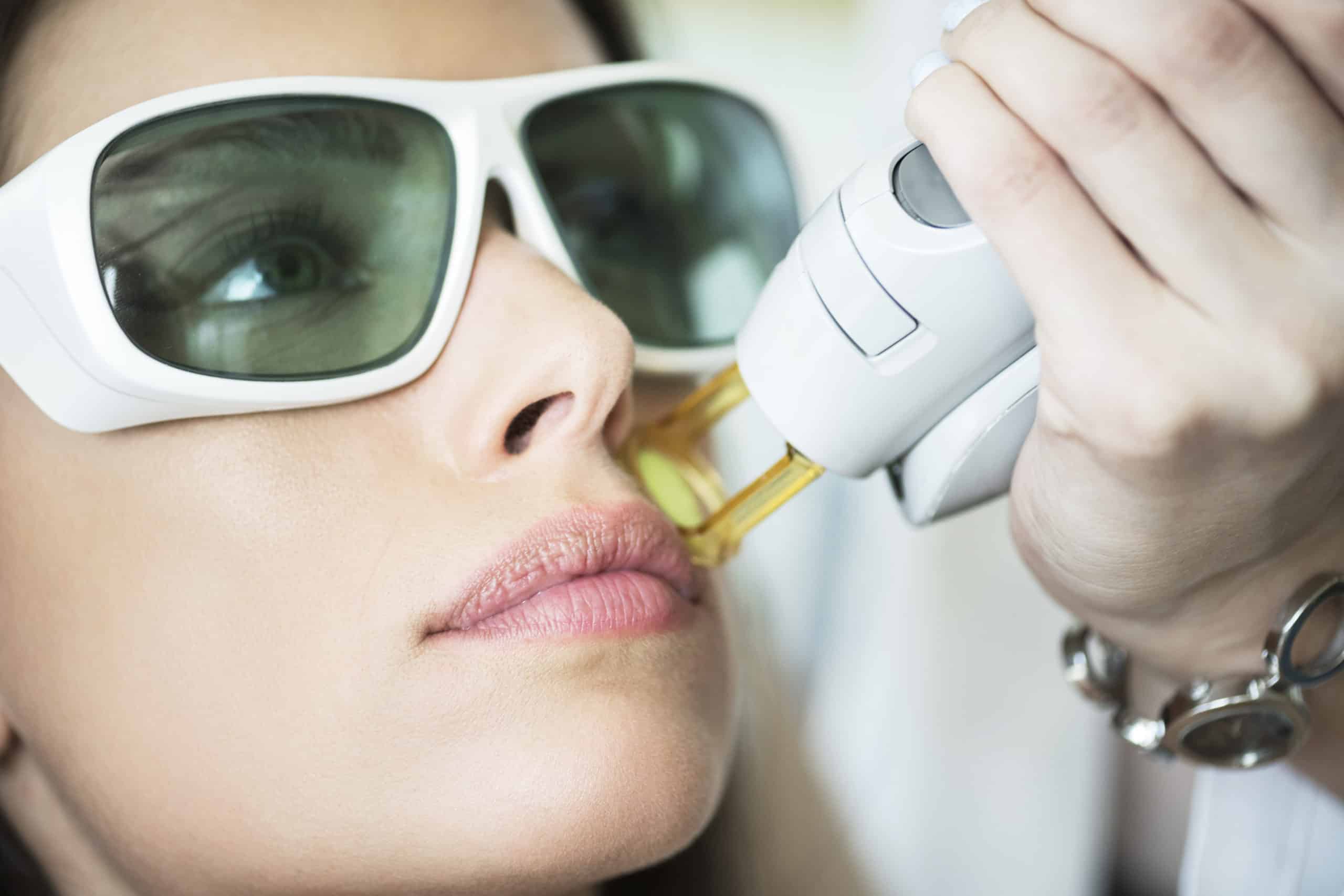Though it’s often worth it, going to the doctor for a cosmetic treatment is a serious commitment: you have to take time off, plan around any expected recovery time, and save up for the procedure. And that doesn’t include the time spent researching procedures, getting consultations, and choosing an experienced, board-certified provider. If just reading that makes you tired, you’re not alone.
That explains why procedures you need to do only once to see results are so wildly appealing. One-and-done treatments mean no repeat visits to the office—as well as more bang for your buck, since a series can often add up. Too good to be true? Sort of: the downside is that these kinds of treatments are few and far between. “Usually, noninvasive procedures with minimal downtime give minimal results, which is why multiple treatments are necessary,” explains Dr. Andrew Cohen, a board-certified plastic surgeon in Encino, California. These five are exceptions to the rule.
Injectable fillers
While they’re not permanent, injectable fillers can still go a long way. “Filler results are seen after one treatment,” says Dr. Heidi Waldorf, a board-certified dermatologist in Nanuet, New York. “Whether those results are sufficient for the patient to be satisfied depends upon how much volume has depleted, how much facial proportions need to be rebalanced, and how much filler the patient is willing to have in one treatment.” One syringe of your average hyaluronic acid filler is often enough to plump lips or reduce under-eye circles in younger patients, while older patients (or those who want significant changes) may need more.
One round of injectables can last anywhere from six months to two years. (The exact timing depends on what type you get, where you get it, and how quickly your body breaks it down.) However, research indicates that some types of filler can stimulate your body’s own production of collagen, for even longer-lasting effects.
Related: How 3 Women Asked for Time Off Work to Have Plastic Surgery
Fractional ablative lasers
Fractional ablative lasers are not for the faint of heart, but the treatment is often worth it. “If you want a permanent solution, a fractional CO2 laser would be your best bet,” says Dr. Cohen. “It’s an ablative laser used to help treat wrinkles and skin texture.” These lasers remove the entire superficial layer of the skin, but they do so in only a fraction of the full surface area, for faster healing. (The beam is focused in a dot pattern, with each dot creating a column of damage within skin. The remainder of skin is unaffected.) For that reason, it’s best for those who want to address wrinkles or other signs of severe sun damage. The drawback here is that with the ablation, you’re looking at five to seven days of downtime.
Fractional non-ablative lasers
If you can’t go into hiding for that long, Dr. Waldorf is a fan of non-ablative lasers, which require just a day or two of downtime. What makes the difference: Non-ablative layers bypass the surface layer of skin and create micro injuries underneath, leaving superficial skin largely intact. With the non-ablative Fraxel Dual, says Dr. Waldorf, “results are seen a few days to a week after one treatment.” You can tack on another session if you want, but it’s not required.
Thermage
For firmer and more toned skin, Thermage delivers results in a single treatment. “Thermage uses monopolar radiofrequency to deliver heat to the dermis,” says Dr. Waldorf. That heat triggers collagen remodeling, which then tightens and lifts the skin. She uses it for patients who have good skin quality and just want some rejuvenation. (Translation: it’s best if you have early sagging and some lines and wrinkles.)
There’s zero downtime, and it’s able to treat the entire surface of the face (your eyelids will require special protective goggles though). Not only that, but it has an immediate tightening effect—although you’ll have to wait three to six months to see the final results. And the results will last years, with the primary factor in that being—no surprise here—the aging process.
Related: What to Know About Thermage, From Someone Who Had It Done on Her Stomach
Ultherapy
Ultherapy is another, relatively more intensive option for tightening skin. While Thermage harnesses radiofrequency, “Ultherapy can deliver heat to several depths, including deeper fibrous layers, using microfocused ultrasound,” says Dr. Waldorf. Since it gets into and heats the deeper layers (and, unlike Thermage, bypasses the dermis entirely), it can lift and tighten even in those with more extensive skin laxity.
One major caveat: Ultherapy is notoriously painful. “Ultherapy has no downtime but does require the use of Pro-Nox, or nitrous oxide, to manage discomfort,” says Dr. Waldorf. She often uses it to lift a slack brow or tighten loose skin on the neck and jawline. And she frequently pairs it with Thermage, for a one-two punch of skin tightening. “For example, a common combo is Ultherapy for the forehead above the brow and periorbital skin outside the bony orbital rim and [then] Thermage for the eyelids themselves,” she explains. Another option is to do Thermage on the entire face and, 6 to 12 months later, do Ultherapy in more localized areas on the jawline and jowls as needed.
CoolSculpting
CoolSculpting, which uses cryolipolysis to freeze and thus destroy fat cells, is ideal for someone with a healthy diet and exercise routine who has areas of fat that won’t budge—due to genetic, hormonal, or practical reasons, according to Dr. Waldorf. While two or three sessions are common, you can still get results from CoolSculpting in a single session. “There’s no maintenance,” she says. “Whatever fat is [destroyed] is gone for good.”
The primary factor in how many sessions you’ll need—if more than one—is the amount of fat reduction you’re seeking. In some cases, “people will need more than one treatment on a given area, to get the amount of fat reduction sought,” she says. Some practices offer DualSculpting, in which the doctor uses a pair of CoolSculpting machines to treat two areas of the body simultaneously, saving you time and, possibly, another treatment. It doesn’t get much more efficient than that.











